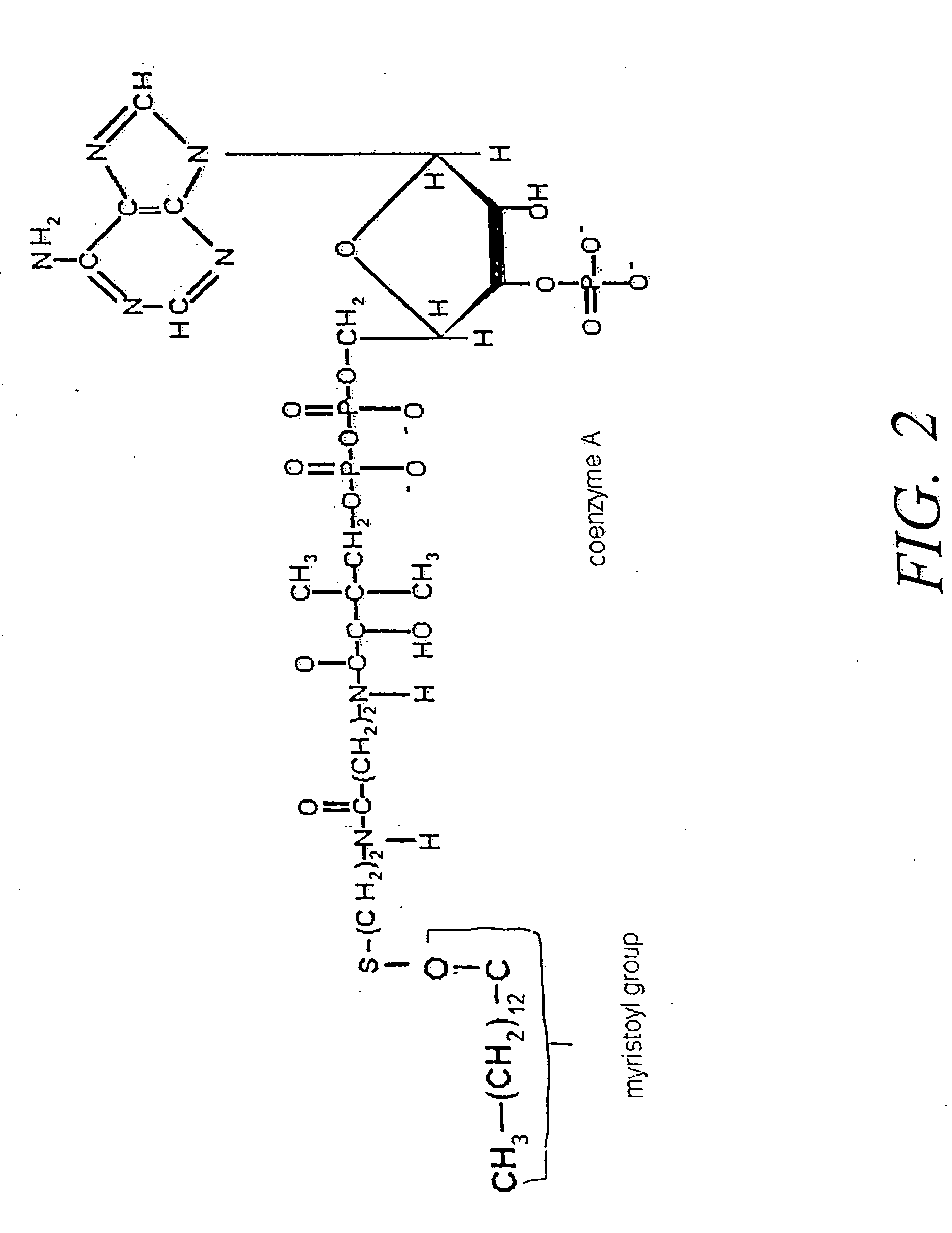Method of reducing immunological tolerance to malignancy
- Summary
- Abstract
- Description
- Claims
- Application Information
AI Technical Summary
Benefits of technology
Problems solved by technology
Method used
Image
Examples
Embodiment Construction
[0027] The patent and scientific literature referred to herein establishes the knowledge that is available to those with skill in the art. The issued U.S. patents, allowed applications, published foreign applications, and references cited herein are hereby incorporated by reference.
[0028] The present invention provides therapeutic compositions including myristoylCoA and NMT, and further provides methods of treating cancer using such formulations, including methods of reducing tolerance of the body to malignant tissues and cells. The types of cancer which can be treated by this method include any carcinoma whose primary or metastatic tumor cells produce A-protein. Such carcinomas include, but not limited to, squamous cell, small and large cell carcinoma of the lung, and breast, colon, cervical, and prostate carcinomas.
[0029] Neither normal (non-cancerous) subjects nor most cancer patients have anti-A-protein antibodies in their system. However, human subjects who suffer from cancer...
PUM
 Login to View More
Login to View More Abstract
Description
Claims
Application Information
 Login to View More
Login to View More - R&D
- Intellectual Property
- Life Sciences
- Materials
- Tech Scout
- Unparalleled Data Quality
- Higher Quality Content
- 60% Fewer Hallucinations
Browse by: Latest US Patents, China's latest patents, Technical Efficacy Thesaurus, Application Domain, Technology Topic, Popular Technical Reports.
© 2025 PatSnap. All rights reserved.Legal|Privacy policy|Modern Slavery Act Transparency Statement|Sitemap|About US| Contact US: help@patsnap.com


